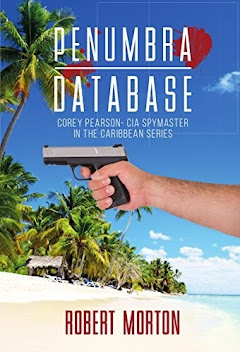 |
| Elite warriors. Silent. Deadly. Unseen |
It starts with a name. A whisper from an
informant. A signal intercepted. A pattern recognized in the endless flood of
global intelligence. Somewhere, in a dimly lit operations center buried deep
within Langley or an undisclosed military base, U.S. analysts watch, listen,
and piece together the puzzle. And when that puzzle reveals a face—a face tied
to a clear and imminent threat to American lives—the machinery of targeted
killing begins to turn.
It’s not like the movies where the U.S.
just picks a bad guy and takes him out overnight. It all starts with a deep
dive—figuring out who this person is, who they’re working with, and how much of
a threat they really pose. The CIA, NSA, and JSOC comb through every scrap of
intel—spying on their calls, tracking their movements, even watching from
space—making sure this isn’t just some low-level thug but someone actually
plotting against the U.S.
That’s what made Qasem Soleimani a marked
man. For years, U.S. intelligence tracked his role in arming and directing
militias that killed American soldiers in Iraq. But what sealed his fate was
fresh intel—evidence that he was planning attacks on U.S. embassies and bases.
That meant one thing: it was time to act. On January 3, 2020, a U.S. drone
strike near Baghdad’s airport took him out.
Taking out a high-value target isn’t just
about firepower—it’s a legal and political minefield. Every operation goes
through a long, careful review to make sure it’s justified. The National
Security Council, Pentagon lawyers, and top intelligence officials all have to
sign off. Is this strike legal under U.S. law? Will innocent people get caught
in the crossfire? And the biggest question of all—what’s worse, taking the shot
or letting this person walk free?
Sometimes, the answer is clear. Take Anwar
al-Awlaki, the radical cleric turned al-Qaeda operative. He wasn’t just
spreading extremist ideology; he was actively planning attacks inside the
U.S.—influencing the Fort Hood shooter, inspiring the underwear bomber, and
guiding the Times Square bombing attempt. He was a direct and ongoing threat.
The Obama administration wrestled with the legal and moral implications of
targeting an American citizen, but in the end, the decision came down. A CIA
drone found him in Yemen, locked onto his vehicle, and fired. Just like that, a
man who had spent years plotting the deaths of Americans was gone.
Not all operations happen from the sky.
Some require boots on the ground, close-range eliminations, and the kind of
precision that only elite special operations teams can deliver. When U.S.
intelligence learned that Osama bin Laden was hiding in Abbottabad, Pakistan,
they didn’t trust a drone to do the job. They needed proof. They needed
finality. That meant sending in SEAL Team 6. Helicopters roared in under the
cover of darkness. The team moved with surgical efficiency, clearing the
compound until they reached their target. A few seconds. A burst of gunfire.
And then, silence. The most wanted man in the world lay dead.
But assassinations aren’t just about
eliminating immediate threats. Sometimes, they’re about sending a message. That
was the case in my spy thriller Crimson Shadows, when
CIA Deputy Director Kimble sat in a high-level White House briefing, briefing
the President on a growing crisis in Latin America. General Hector Alvarez, a
rogue military commander in Panama, was on the verge of seizing power with the
backing of Russian oligarch Viktor Orlov. Alvarez wasn’t just a
dictator-in-waiting—he was making deals with cartels, smuggling weapons, and
setting up Panama as a Russian proxy.
Kimble didn’t mince words. "If we let
this play out, Moscow gets a foothold in our backyard. And next time, it won’t
be just Latin America they’re after." The President listened, nodded, and
then gave the order.
Within hours, Corey Pearson, a seasoned
CIA operative, was leading a JSOC team into the depths of Panama. Their mission
was clear: Alvarez had to go. Orlov, too, if they could get to him. It wasn’t
just an assassination; it was a warning shot to the Kremlin.
Taking out high-value targets always comes
with risks. Iran retaliated after Soleimani’s death, launching missiles at U.S.
bases in Iraq. The elimination of bin Laden triggered a surge in terrorist
propaganda. And the death of al-Awlaki sparked debates over whether an American
citizen should be killed without trial. These are the shadows that follow every
operation—the lingering consequences of striking first.
But here’s the hard truth: there are
people out there who wake up every day plotting to harm Americans. They plan
bombings, fund terror networks, and throw entire regions into chaos for power
or politics. The men and women of U.S. intelligence stand in their way. They
work in the shadows, in the gray areas, in places where war doesn’t look like
war and battlefields have no borders.
Somewhere, right now, a name is being
whispered. A pattern is emerging. And in the depths of some classified
intelligence report, the pieces are falling into place. The question isn’t
whether the next target has already been chosen. The question is when the order
will come down. And when it does, the silent war will claim another ghost.
Robert Morton is a member of the Association of Former Intelligence Officers (AFIO) and an accomplished author. He writes the Corey Pearson- CIA Spymaster Short Story, blending his knowledge of real-life intelligence operations with gripping fictional storytelling. His work offers readers an insider’s glimpse into the world of espionage, inspired by the complexities and high-stakes realities of the intelligence community.





No comments:
Post a Comment